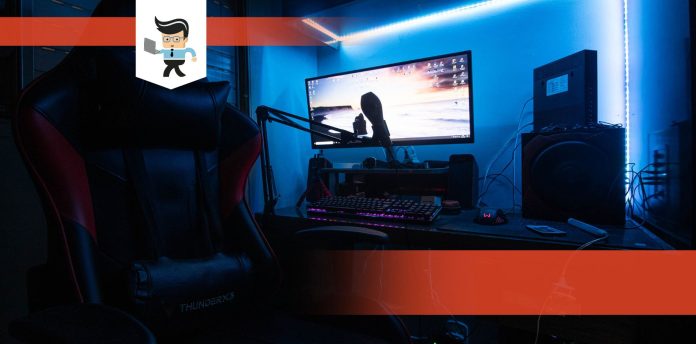“Computer heats up room” – sounds familiar because we’ve all experienced that unexpected sauna session, especially in the sweltering summer months. It’s not just uncomfortable; it’s a sign your machine might be working too hard.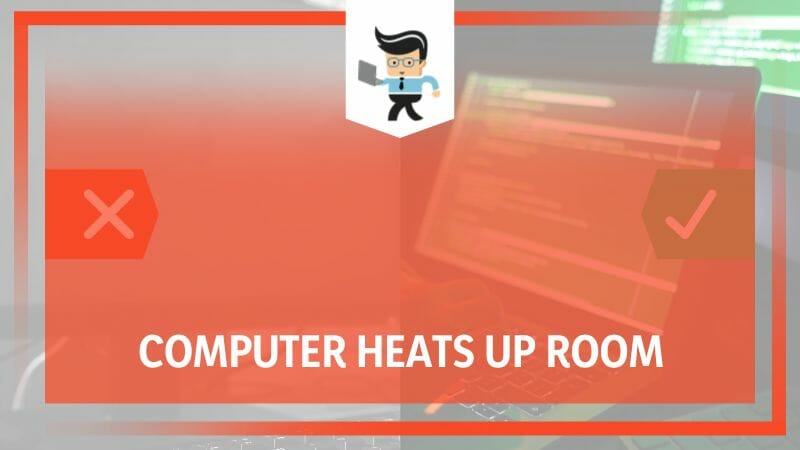
But fear not because we’ve got your back, from the correct power supply and thermal paste application to innovative solutions like water cooling, cooling pads, or a strategically placed floor fan. Join us on this enlightening journey to understand how to curb this fiery issue and transform your tech hotspot into an excellent, efficient workspace.
Contents
Why Does the Computer Heat up the Room? Standard Culprits
The computer generating a lot of heat primarily due to the power-intensive components like the CPU, GPU, and power supply. These parts produce heat as they work, and if not effectively dissipated through fans, heatsinks, or water cooling, the temperature can rise, warming up your room.
It’s common knowledge that high-tech gadgets, including our beloved PCs, generate heat. But when this heat isn’t efficiently managed, our room feels like a summer day at the beach.
One critical component contributing to this situation is the CPU fan. Acting as the primary defense against overheating, it dissipates the heat produced by your computer’s processor. If it’s not up to par, you can expect your CPU – and your room – to get hot.
While we’re at it, let’s remember the graphics card. Anyone who enjoys playing games on their gaming PC knows that high-end games push graphics cards to their limits, making them significant heat producers.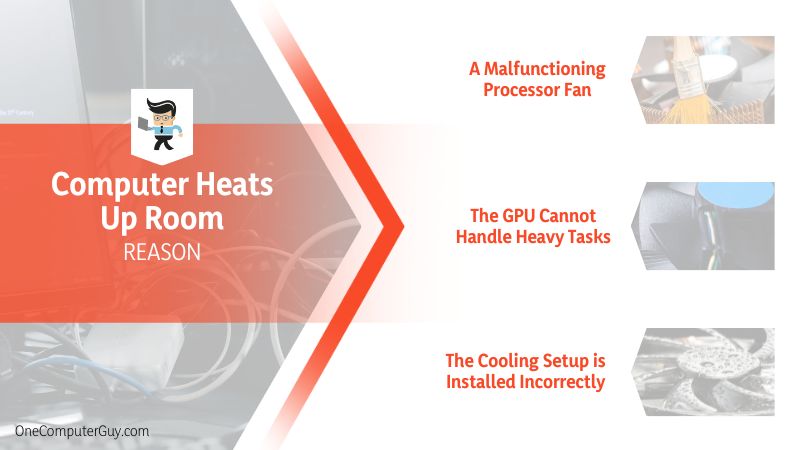
Suppose you’re immersed in your favorite game, your graphics card working double-time, transforming complex code into visual masterpieces. This Herculean task creates a substantial amount of heat, raising the temperature in your room.
The air conditioner can help, but there are more long-term solutions. Constantly running the AC to combat computer-generated heat can sky-high your energy bills.
Another potential culprit is your PC’s cooling kit. Yes, you heard right. If your cooling kit is practical and correctly installed, it can result in good heat dissipation, leading to an uncomfortably warm room.
So, how to keep your PC cool while gaming? That’s a million-dollar question. There are many potential answers to that, but before we delve into those, it’s crucial to remember that understanding why your computer heats your room is the first step toward finding an effective solution.
By knowing what components are heating and how your computer usage affects this, you’ll be better equipped to keep your PC – and your room – cool.
– A Malfunctioning Processor Fan
When dealing with a constantly overheating computer, a malfunctioning processor fan is one of the first culprits to consider. This component is responsible for cooling the processor, one of the significant heat-producing elements in your machine. Suppose the fan isn’t working correctly, possibly due to dirt, dust accumulation, or mechanical issues.
In that case, it can’t efficiently perform its cooling function. An example is when the fan spins at a prolonged speed, reducing airflow and causing heat to build up in the processor. A machine running in such conditions often struggles to operate efficiently and distribute substantial heat to the room, making it uncomfortably warm.
– The GPU Cannot Handle Heavy Tasks
Another significant factor that can turn your computer into a mini space heater is when the GPU cannot handle heavy tasks. GPUs are essential for rendering images, playing videos, and running high-performance software or games. When pushed beyond their limits, they produce excess heat.
Consider a scenario where a user tries to run the latest AAA game title on a graphics card designed for delicate tasks. The GPU would be pushed to its limits, generating excessive heat and raising the room’s temperature.
– The Cooling Setup is Installed Incorrectly
Lastly, an improperly installed cooling setup can lead to a warmer room. Cooling setups, such as heatsinks, fans, and even water-cooling systems, are designed to dissipate the heat produced by your PC’s components. But if these are installed incorrectly, they can’t function optimally.
For instance, a cooling fan installed in the wrong direction might blow hot air back into the computer instead of outwards. This would cause the internal temperature to rise, leading to the computer’s heat being radiated into the room instead of being adequately managed.
How to Repair the Computer That Heats Up the Entire Room?
To repair the computer that heats up the entire room, ensure proper ventilation, clean dust from components, check if the cooling system, like fans or water cooling, is functioning correctly, and assess whether the CPU and GPU are being overloaded. Consider professional help if needed.
Keep it in a well-ventilated area where hot air can escape freely. Dust and debris can also hamper your computer’s ability to stay cool, so regular cleaning is essential. Use a compressed air canister to remove dust from the fans, heat sink, and other components.
Next, take a look at your computer’s cooling system. Fans, heat sinks, and water cooling systems if they are placed the way they are designed to dissipate the heat your computer generates. However, if they’re malfunctioning or incorrectly installed, they can contribute to the heat problem. Ensure they’re operating correctly and set up per manufacturer instructions.
Now, let’s consider the workload on your CPU and GPU. High-performance tasks such as gaming, video editing, or running complex software can strain these components considerably, making them produce more heat. Consider if your usage aligns with the capabilities of your machine. You should upgrade your hardware if it can’t handle regular tasks without overheating.
Lastly, don’t hesitate to seek professional help if needed. Computer repair experts can perform a thorough checkup and pinpoint any underlying issues causing the excessive heat. Remember, a computer that consistently overheats could indicate more severe problems that could damage your machine in the long run.
Addressing a computer that heats up the room might seem daunting, but with a systematic approach, it’s manageable. You’re on your way to a cooler and more efficient computing experience by ensuring your machine is clean, well-ventilated, and not overburdened.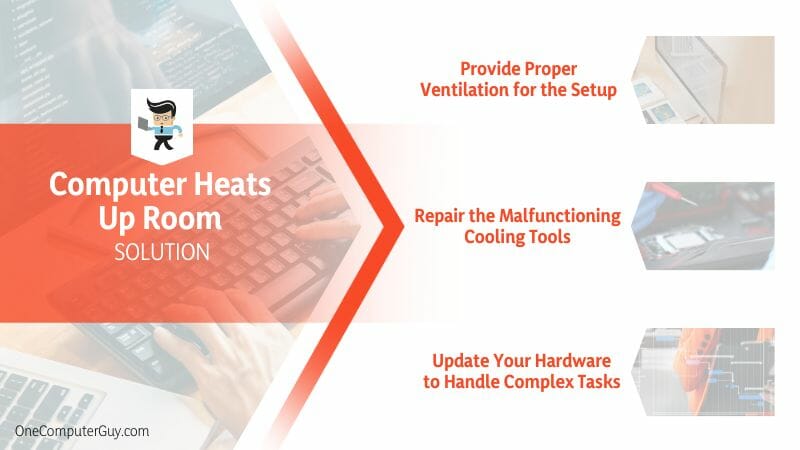
– Provide Proper Ventilation for the Setup
Ventilation is critical in preventing your computer from turning your room into a mini greenhouse. Here are some steps to ensure your setup breathes properly:
- Position Wisely: Avoid placing your computer in a confined space or against a wall where airflow might be restricted. Leave ample space around the machine for air to circulate.
- Clean Surroundings: Dust or clutter around your setup can block the ventilation. Make sure the surroundings are clean and uncluttered.
- Room Temperature: A cool room helps the computer to dispel heat more effectively. Consider using air conditioning or a fan in the room.
- Don’t Block Vents: Ensure the computer’s air vents are not covered. This helps the heat to escape and cool air to enter.
– Repair the Malfunctioning Cooling Tools
The cooling tools are crucial for managing heat generation in your computer. If they malfunction, follow these steps:
- Inspect Fans: Check whether the fans, mainly CPU and GPU fans, are spinning correctly. If not, they might need repair or replacement.
- Clean Regularly: Dust can hinder the cooling efficiency of fans and heat sinks. Use compressed air cans for cleaning.
- Check Water Cooling System: If your computer has a water cooling system, ensure it works properly. Look for leaks and confirm the pump is operational.
– Update Your Hardware to Handle Complex Tasks
If your computer cannot handle complex tasks without overheating, it might be time for an upgrade: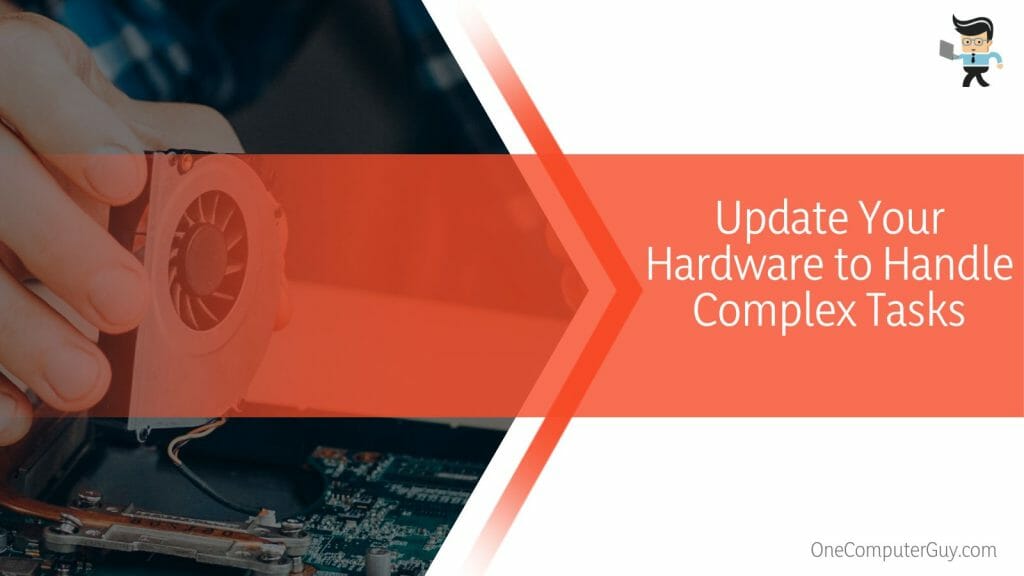
- Upgrade CPU or GPU: If your tasks are resource-intensive, consider upgrading your CPU or GPU to a model that can handle the load without overheating.
- Additional Cooling Solutions: If the existing cooling system is insufficient, consider adding more fans, a more efficient heat sink, or even a water cooling system.
- Upgrade Power Supply: A sufficient power supply can prevent your computer from overheating. Consider a higher wattage power supply if necessary.
Remember, a cool computer is a happy computer, and it starts with providing adequate ventilation, maintaining the cooling tools, and having suitable hardware for your needs.
Conclusion
We’ve deeply explored why a computer heats a room and the effective ways to mitigate this issue. As we learned, it’s not just about comfort but about the health and longevity of your device, so here’s a quick recap:
- Proper ventilation is crucial in maintaining a reliable computer.
- Regular cleaning and maintenance of cooling tools, like fans and heat sinks, are essential.
- Overburdening hardware components can lead to increased heat output.
- Ensuring an adequate installation and operation of the cooling setup can prevent overheating.
- Upgrading hardware to match your usage requirements can reduce excessive heat generation.
Resolving the issue of a room-heating computer gives you a more comfortable environment and enhances your device’s performance and lifespan. With these insights, you can tackle the heat, ensuring a more relaxed, efficient, and productive computing experience.

